Choice schools tackle pandemic-related learning loss
| Share this post: |
School Choice Wisconsin set out to see what some of our choice schools did last year and will do going forward to combat the disruptions and learning loss that followed the pandemic lockdowns. See what we found.
Recent headlines, such as this story in The New York Times and this piece in The Atlantic, cite a pandemic-related learning loss that is more serious than many had realized. The loss was worse for schools that stayed closed longer in response to the pandemic, according to a study from Harvard’s Center for Education Policy. “Remote learning was a failure,” wrote The New York Times in a May 5 story.
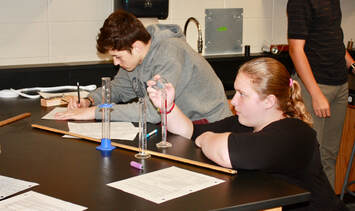
Students at work at Sheboygan Lutheran.
To refresh your memory: Schools across Wisconsin closed in March 2020, following an order from Gov. Tony Evers. Madison returned to in-person learning in March 2021 while Milwaukee Public Schools returned to in-person learning in April of that year.
In general, private choice schools were able to be flexible in their approach to the lockdowns, drawing on parent and teacher input while also following government mandates. They turned to an array of localized approaches.
Sheboygan Lutheran High, for example, chose to have all in-person learning for 20–21 (“their vote was to be in person,” says Principal Derek Bult of his teachers.) LUMIN Schools, a Lutheran organization with seven campuses in the Milwaukee area and Racine, created an online school with a separate team of teachers dedicated to online instruction, hiring personnel to take on the task. St. Thomas More, on Milwaukee’s south side, used a hybrid model.
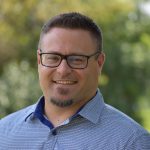
Shaun Luehring, president & CEO,
LUMIN Schools
“We know that there is just no substitute for in-person instruction, regardless of how you set it up,” says Shaun Luehring, president and CEO of LUMIN Schools.
All three organizations stressed that last school year (2021–22), teachers were to teach at grade level instead of going into some sort of perpetual remedial mode.
Among subjects, reading and writing seem to have been impacted the most, especially with younger kids, said Carly Hertel, LUMIN senior director of schools. LUMIN beefed up its academic intervention and tutoring and was being targeted in matching students with the best resources for their needs, she said.
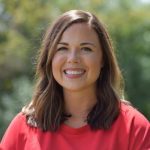
Carly Hertel, LUMIN senior director of schools
Over at St. Thomas More in Milwaukee, Principal Pat Idstein said a 52-minute enrichment period at day’s end that students can use as a study hall or to meet with teachers proved helpful to his students post-lockdowns. This class period was created pre-pandemic to provide students opportunities to enrich mind, body, and spirit without reducing class time or slowing down the day’s pace. Students can use the time to access school-wide support resources and services (counselors, teachers, NHS student tutors, staff, campus ministry, and the STM Chapel), go to a renovated fitness center, and participate in weekly class Masses and club meetings.
STM provided afternoon tutoring in every subject matter to help them with whatever presented a challenge. STM’s faculty committed time after school four days a week to all students who needed it. In total, students could take advantage of nearly two hours to address their academic needs. Since the inception of the program, STM students have performed better on assignments, projects, and tests and the school has seen a reduction in students’ anxiety and stress levels, says the school.
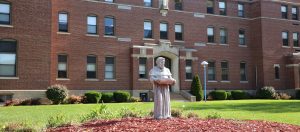
St. Thomas More High, on Milwaukee’s south side.
“We try to focus on making sure that everybody’s got at least someone who they feel they could go to if they needed to, an adult who they trust here,” Idstein added.
At Sheboygan Lutheran, Wednesday mornings have a late start and student help time. The school also has a program that meets after school Mondays and Wednesdays to help students with study skills. “We’re trying to give students that are struggling about three hours a week of opportunity to either meet with teachers or tutors to increase scores, increase their skill level and abilities and learn study skills.”
Several more years
Voluntary summer school, doubling the quantity of math instruction (double-dose math) and high-dosage tutoring are among strategies for schools seeing severe learning loss.
High-dosage tutoring is intensive daily tutoring one-to-one or in very small groups. Recent research from Georgetown University says schools are using high-dosage tutoring heavily.
Another option is longer school years for the next two years, Thomas Kane, faculty director of the Center for Education Policy Research at Harvard, wrote in a recent story in The Atlantic.
That type of deeper intervention may not be needed at many choice schools. Sheboygan Lutheran isn’t going to any of those strategies. (Its tutoring is targeted, but not “high-dosage” as defined above.) While LUMIN doesn’t do high-dosage tutoring exactly, it did revise some of its tutoring or small-group instruction to be more targeted. It sometimes uses outside partners such as Reading Corps. “Great organization,” says Luehring. LUMIN encourages summer school.
Bult thinks schools will need to play COVID catch-up for several more years. On the optimistic side, recent data from Ohio, reported by Harvard’s Education Next, showed that students are starting to regain pace.
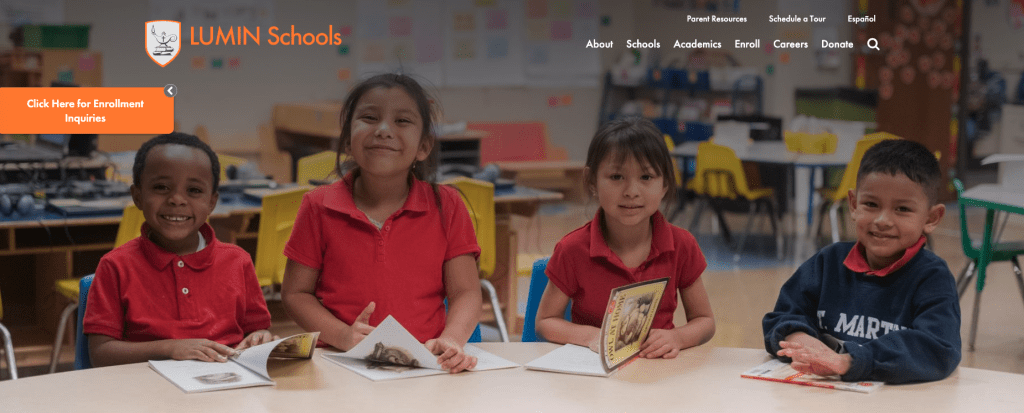
Screenshot of LUMIN Schools’ website.
Four months behind, mental health crisis
There’s no shortage of data showing that learning loss is an issue, hitting high-poverty schools the hardest, according to a study at Harvard.
- “We find that remote instruction was a primary driver of widening achievement gaps,” said the Harvard study. “Math gaps did not widen in areas that remained in-person (although there was some widening in reading gaps in those areas). We estimate that high-poverty districts that went remote in 2020-21 will need to spend nearly all their federal aid on academic recovery to help students recover from pandemic-related achievement losses,” said the study.
- In North America and Europe, students are, on average, four months behind, according to an April report from consulting firm McKinsey & Company.
- One-fifth of American students were enrolled in districts that remained remote for the majority of the 2020–21 school year, according to McKinsey calculations. For these students, “the effects were severe,” says McKinsey.
- In Wisconsin, for the first time, proficiency fell below 40% statewide in both math and ELA, according to the most recent Apples to Apples data crunch report from the Wisconsin Institute for Law & Liberty.
- Forward Exam participation was higher in Milwaukee choice and charter schools. Compared to public schools, choice students in Milwaukee participated in the Forward Exam at a 46% higher rate. Independent charter school students participated at a 39% higher rate.
- Mental health is also an issue. In December 2021, the U.S. surgeon general issued an advisory on the need to address what it calls a youth mental health crisis.
To tackle learning loss and other challenges, Congress set aside around $190 billion for schools in COVID-19 rescue bills. The latest batch came in the form of a grant dubbed ESSER III (Elementary and Secondary School Emergency Relief Fund). Schools need to use at least 20% of ESSER III to address the academic impact of lost instructional time through evidence-based interventions, according to the state Department of Public Instruction.
Choice school administrators and the rest of us can only hope that next year will come with fewer complications than we’ve seen in recent days.
—School Choice Wisconsin
| Share this post: |
 Skip to content
Skip to content